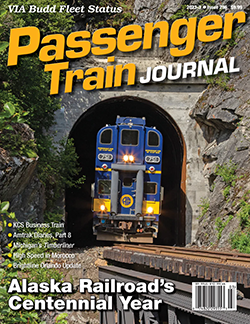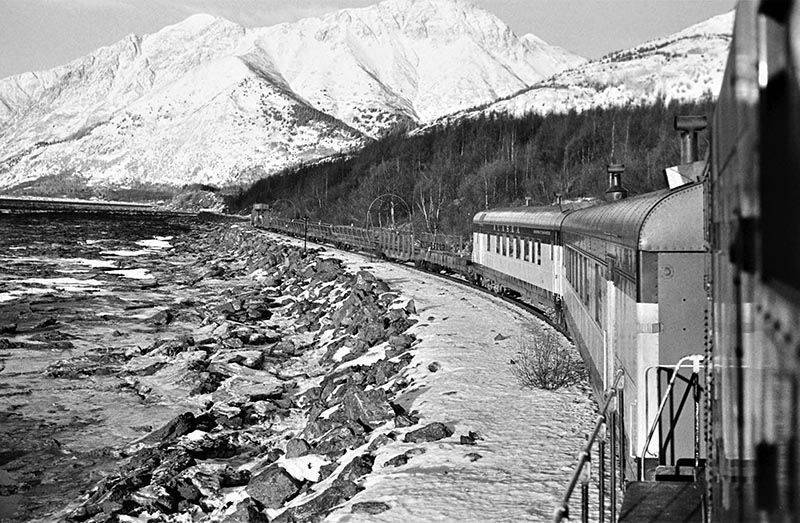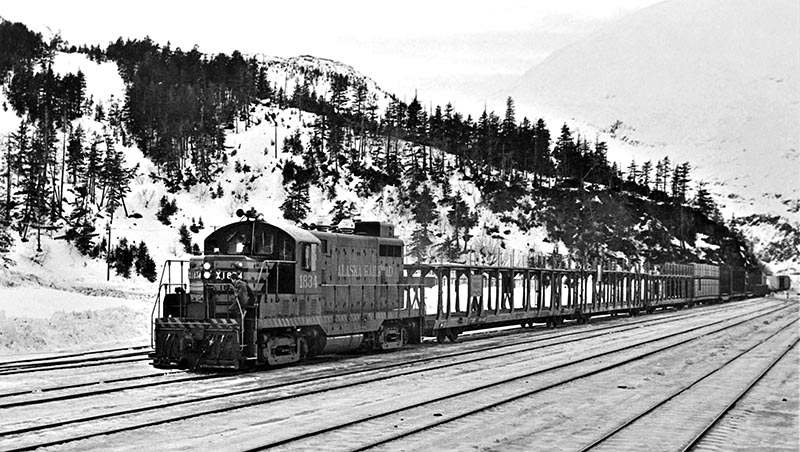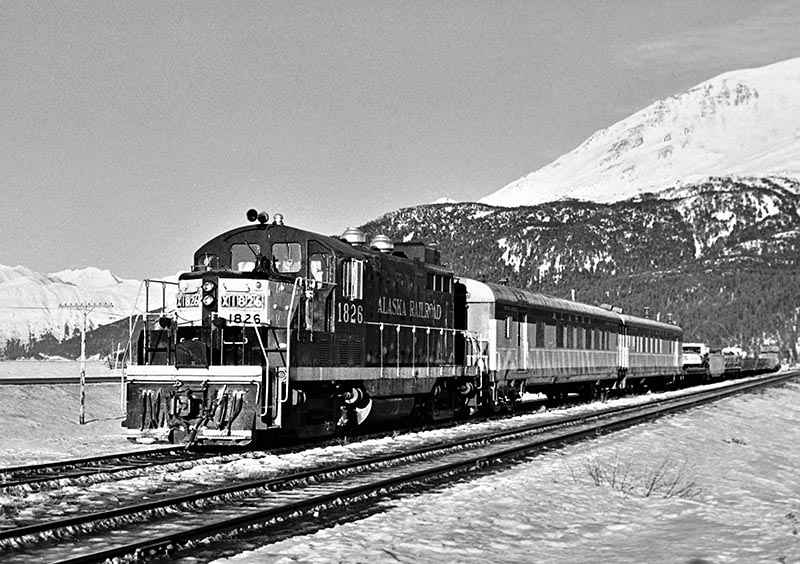 by Bill Anderson/photos by the author
by Bill Anderson/photos by the author
This year marks the 100th anniversary of the completion of Alaska Railroad’s (ARR) Seward–Fairbanks 470-mile trunk line. On July 15, 1923, President Warren Harding drove a ceremonial golden spike at Nenana, although the actual contiguous route had been completed five months before, on February 10.
Once the Alaska Railroad legislation, the Act of 1914, was enacted, the federal government went into a planning process to determine the best route to reach Fair-banks. Seward, where a year-round ice-free ocean port existed, was selected as the southern terminus. However, there was also consideration for Passage Canal. To access Passage Canal would require drilling two long tunnels, one at 2½ miles, and was not compatible with the key goals to complete a railroad to Fairbanks. So, developing access to what would later be named Whittier was put on the shelf.
It is interesting that even without the more expensive route into the future port of Whittier, the amount appropriated in the Act of 1914, $35 million, was woefully insufficient for ARR’s completion. The final tab was reported to be at least $56 million. Clearly, budget overruns involving government projects are not a more recent phenomenon.

ABOVE: The first Shuttle run of the day follows the shore of Turnagain Arm en route from Anchorage to Portage, where vehicles will be loaded onto the train’s customized flatcars for the 12-mile trip over the Whittier Sub. —Bill Anderson
Whittier becomes ARR’s primary port
As the clouds of World War II were building, U.S. military interest in a defensible, all-year ice-free port to supply Alaska was also increasing. Thus, the plans from several decades earlier were dusted off, and in 1941 a $5.3-million appropriation directed the War Department to build the “Portage Cut-Off.” In that process, the port location was named Whittier, after a nearby glacier named for the poet John Greenleaf Whittier. A military facility was also built to house personnel and transload supplies between ships and the railroad.
The benefits for Whittier vs. Seward were notable. First, a shorter rail distance, by 52 miles, to Anchorage and points north exchanged very rugged topography for a relatively flat right-of-way, thanks to the tunnels. In addition, the route from Seward included grades up to three percent, multiple sharp curves, many bridges, and snow sliding onto the track. Second, a shorter water route from the west coast of the U.S. and Canada. Third, better protection from the threat of Japanese submarines and aircraft due to many overcast/bad weather days.

ABOVE: Alaska Railroad GP7 1834 switches “Lower 48” freight cars at Whittier in January 1975. Starting in the early 1960s, freight cars have been ferried aboard barges between Washington, British Columbia, and Whittier. —Bill Anderson
From a military perspective, Whittier was a defensible and relatively secure location. Construction began in Novem-ber 1941, and it was operational in April 1943. Whittier became the transfer point for significant material and supplies to build, maintain, and provision other military facilities in the territory. With the end of World War II, Whittier was shut down, and the remaining port operations were moved to Seward in 1946. However, a strike at the port of Seward that fall convinced the military to move back to Whittier, where plans advanced to make this a permanent facility…


